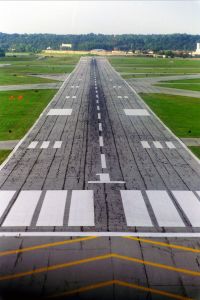Federal investigators were recently called to the scene of a Massachusetts aviation accident when the wing of a large moving passenger jet clipped the tail of a stationary aircraft on the taxiway of Boston’s Logan International Airport. Both of the aircraft sustained damages and were taken out of service, according to The Washington Post.
One plane was Delta Flight 266 that was heading from Boston to Amsterdam. The other plane was Atlantic Southeast Airlines Flight 4904 that was heading from Boston to Raleigh-Durham.

Our Massachusetts personal injury attorneys understand that these accidents are not as uncommon as some may believe. The frequency of these accidents has landed them a spot on the National Transportation Safety Board‘s (NTSB) ‘”most wanted” list. This list is part of a program that aims to increase the public’s awareness of, and support for, action to adopt safety steps that can help to prevent these types of accidents and save lives along the way.
According to an airport spokesman, there was one passenger that was complaining of neck pain and was taken to the hospital for treatment. While these were commercial airliners, the real risk of plane accidents in New England is in the general aviation sector.
Luckily, there has not been a fatal large commercial aviation accident in the United States since 2009. That’s not the case in the world of general aviation. According to the NTSB, there were nearly 500 people killed in general aviation accidents in 2009 alone. Thousands more were injured in the accidents.
General aviation accidents are six times more likely to happen than small commuter and taxi operation accidents and more than 40 times more likely to occur than transport category operations. This means that general aviation continues to present the most risk.
The NTSB recommends the following fixes to help reduce the number of fatal general aviation accidents:
-Make sure that maintenance personnel are continuously updated with current training and pay close attention to key systems, such as electrical systems.
-Aircraft design should address icing.
-All general aviation aircraft should come equipped with the best occupant protection systems that are currently available.
-All aircraft should come with working emergency locator transmitters so that emergency responders can facilitate timely discovery and rescue in the event of an accident.
-Properly train all pilots.
-All general aviation pilots should be required to take initial and recurrent training on the various weather information sources. They should also be required to learn the appropriate steps to take when they inadvertently encounter adverse weather.
-Pilots not only need to be able to understand how general aviation technology works, but they also need to understand how it can malfunction. During an emergency isn’t time look through a plane’s manual to try to figure out how to adjust the flight display.
-Every passenger should have a seat and a restraint system. This includes children under the age of 2.
The Boston general aviation accident lawyers at Jeffrey Glassman Injury Lawyers, LLC know that being involved in a serious or fatal Massachusetts general aviation accident can be among the most trying experiences of a lifetime. If you have been injured, or someone you love has been injured or killed in a Boston accident, we can help. You can schedule a free initial consultation, by contacting us online or calling our offices at (617) 777-7777 to discuss your rights.
 Boston Personal Injury Attorney Blog
Boston Personal Injury Attorney Blog

